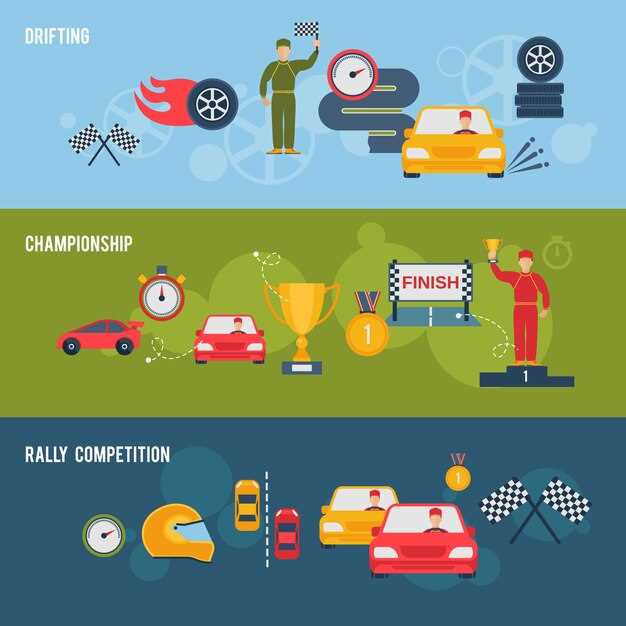
Preparing your car for a track day requires a meticulous approach to tuning and modifications, ensuring that every component works harmoniously to maximize performance. It is not merely about horsepowers and torque; it is about the entire system’s efficiency, balance, and responsiveness on the circuit. With the right enhancements, you can significantly reduce lap times and enhance your overall driving experience.
First and foremost, suspension tuning plays a crucial role in your vehicle’s handling characteristics. Upgrading to performance coilovers or adjustable shock absorbers allows you to fine-tune your car’s ride height, dampening, and stiffness to match the specific track conditions. This ensures optimal grip and stability when navigating corners at high speeds.
In addition to suspension adjustments, braking enhancements are vital for a successful track performance. Upgrading to high-performance brake pads, rotors, and fluid can improve stopping power and reduce fade during prolonged track sessions. The ability to confidently brake late can be a game-changer in shaving off critical seconds from your lap times.
Furthermore, consider evaluating your car’s engine tuning. Utilizing a performance ECU remap can unleash additional power while optimizing fuel efficiency. Combining this with an upgraded intake and exhaust system can create a more responsive throttle and enhance the overall sound of your engine, making your driving experience more thrilling.
Each modification should be seen as part of a holistic approach to optimizing your vehicle for track use. By addressing suspension, braking, and engine performance, you can ensure that your car not only meets expectations but also exceeds them on the track. Embrace the challenge of tuning your vehicle, and relish the rewards that come with superior performance.
Adjusting Suspension Settings for Improved Handling
When preparing your car for a track day, one of the most crucial aspects to consider is the suspension setup. Properly adjusting your suspension settings can significantly enhance handling, stability, and overall performance in various driving conditions.
1. Understand Your Suspension Components
Before making adjustments, familiarize yourself with the key components of your suspension system, including springs, dampers, anti-roll bars, and ride height. Each element plays a specific role in how your car responds to inputs and maintains traction.
2. Adjusting Ride Height
Lowering the ride height can lower the center of gravity, which improves handling by reducing body roll. However, be cautious about striking a balance; too low can lead to bottoming out on bumps. Aim for a height that offers a compromise between aesthetics, aerodynamics, and handling performance.
3. Spring Rates
Changing spring rates can alter the stiffness of your suspension. Stiffer springs typically provide better handling on smooth track surfaces but may reduce comfort on uneven terrains. Consider the track’s characteristics and your driving style when selecting spring rates.
4. Dampers and Rebound Settings
Dampers control how quickly your suspension reacts to bumps. Adjusting the compression and rebound settings allows you to fine-tune how the car absorbs impacts and returns to its original position. A stiffer compression setting can improve turn-in response, while an appropriate rebound setting enhances grip during cornering.
5. Sway Bars
Installing or adjusting anti-roll bars (sway bars) can greatly influence handling. A thicker sway bar reduces body roll during cornering and helps transfer weight to the outside wheels, improving grip. However, too stiff a sway bar can lead to oversteer or understeer, so make adjustments gradually.
6. Corner Balancing
Corner balancing ensures even weight distribution among the four wheels. This adjustment optimizes handling and stability, especially during high-speed cornering. It may require precise adjustments to ride height or spring rates to achieve a balanced setup.
7. Test and Tune
After making these adjustments, it is essential to test your car on the track. Take note of its behavior during different driving conditions and make iterative changes based on your feedback. This hands-on approach will allow you to refine your suspension settings for optimal performance.
By carefully adjusting your suspension settings, you can significantly enhance your car’s handling characteristics, making for a more enjoyable and competitive experience on the track.
Selecting the Right Tires for Different Track Conditions
Choosing the appropriate tires for your vehicle is crucial for maximizing performance during track days. Different track conditions necessitate specific tire features to ensure optimal grip, stability, and control. Below are key considerations for selecting tires based on various track conditions:
1. Dry Track Conditions
- Summer Tires: Designed for warm weather, summer tires offer superior performance on dry surfaces due to their softer rubber compounds and enhanced tread patterns.
- Track-Specific Tires: These tires are engineered for higher grip levels and often have minimal tread to maximize contact with the road. They are ideal for competitive racing.
- Performance Street Tires: Provide a balance between everyday usability and track performance. Suitable for casual track days while ensuring comfort and responsiveness.
2. Wet Track Conditions
- All-Season Tires: While not optimal for performance, they offer better wet traction than summer tires due to deeper treads and sipes for water evacuation.
- Wet-Weather Racing Tires: Purpose-built for wet conditions, these tires feature specialized tread patterns that channel water away and prevent hydroplaning.
3. Mixed Conditions
- Intermediate Tires: These versatile tires bridge the gap between slicks and wet tires, functioning effectively on damp tracks and providing a balance between grip and durability.
- Slicks with Water Channels: Some racing slicks come with slight tread patterns designed to handle brief wet conditions while maintaining high performance in dry patches.
4. Considerations for Tire Selection

- Track Temperature: Warmer temperatures improve tire performance; ensure you choose tires that operate efficiently at expected temps.
- Tread Wear: Evaluate tire wear characteristics and adjust your choice if you expect significant track time, as tires can degrade quickly.
- Vehicle Setup: Ensure that your tire choice aligns with your car’s suspension setup and overall configuration for optimal handling.
Ultimately, the right tires for track conditions can significantly impact your performance and safety. Assess the conditions ahead of time and select your tires accordingly to enjoy a thrilling and competitive track day experience.
Optimizing Engine Performance Through ECU Remapping

ECU remapping, also known as chip tuning, refers to the process of modifying the electronic control unit (ECU) of a vehicle to enhance engine performance. The ECU is responsible for managing critical engine functions, such as fuel delivery, ignition timing, and boost levels in turbocharged vehicles. By adjusting these parameters, car owners can significantly improve their vehicle’s power output, response times, and overall efficiency.
One of the primary benefits of ECU remapping is the increase in horsepower and torque. Original factory settings are often conservative to accommodate various driving conditions and regulatory standards. Remapping allows for more aggressive tuning, which unleashes the engine’s full potential. For track day enthusiasts, this additional power translates to improved lap times and a more exhilarating driving experience.
Furthermore, remapping can optimize throttle response. Many vehicles experience a delay between pressing the accelerator pedal and actual engine response, known as throttle lag. ECU remapping can fine-tune the throttle mapping, allowing for a more responsive driving experience. This immediate power delivery is crucial when negotiating corners or executing overtakes during high-performance driving situations.
Another aspect of ECU remapping is fuel economy enhancement. By optimizing the air-fuel mixture and timing, drivers may achieve better fuel efficiency under certain conditions. This is particularly valuable during track days where maintaining speed without excessive fuel consumption can lead to longer sessions without refueling interruptions.
Before undertaking ECU remapping, it is essential to consider vehicle modifications, such as upgraded exhaust systems or intake upgrades. These modifications may require specific tuning for optimal compatibility. Additionally, seeking professional services from experienced tuners can ensure that the remapping process does not compromise vehicle reliability or longevity.
In conclusion, ECU remapping serves as a powerful tool for optimizing engine performance. With proper tuning, drivers can experience a substantial boost in power, improved throttle response, and potentially enhanced fuel economy, all of which contribute to a more satisfying and competitive track day experience.
